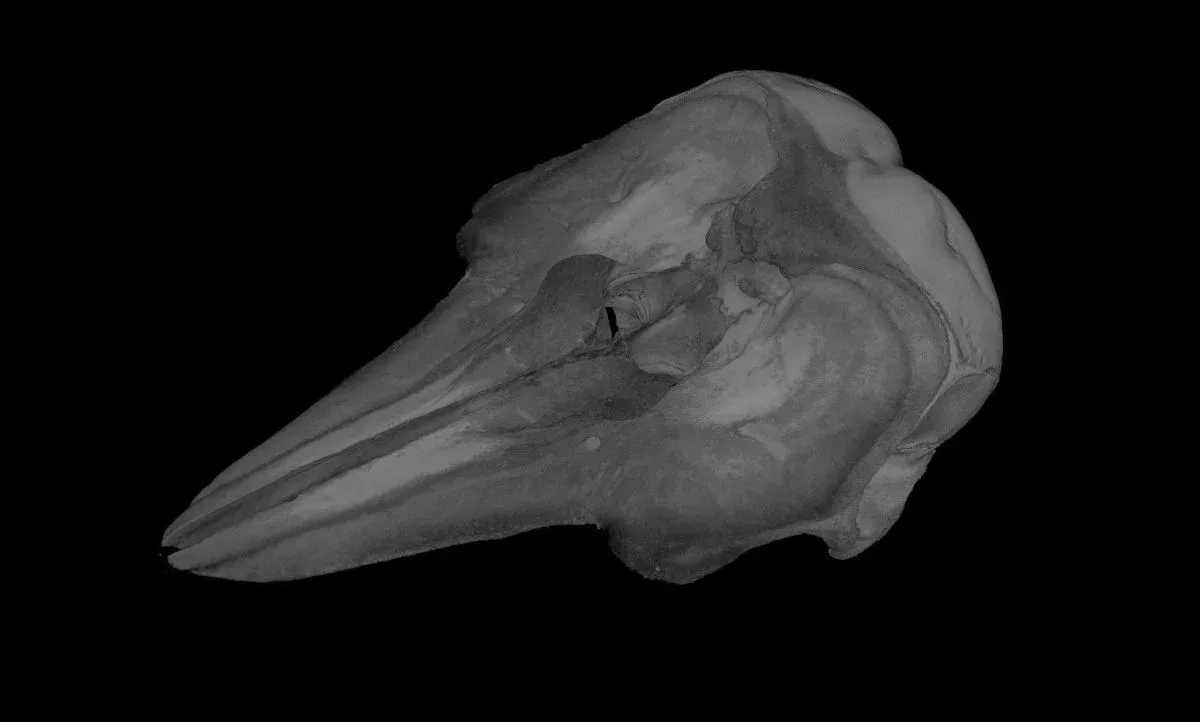Scientists' quest to "digitally resurrect" world's most endangered marine mammal
US researchers have teamed up to scan the rare skeleton of the vaquita, the smallest and most endangered porpoise in the world. The vaquita, meaning "little cow" in Spanish, is found exclusively in the northern Gulf of California, covering a small area of about 3,900 square kilometres. Since 1997, its population has dramatically dropped from around 600 to fewer than 10 individuals today, and at this rate, it is expected to become extinct imminently.
The main threat to the vaquita's survival is entanglement in illegal gillnets used to capture the totoaba, a critically endangered fish. According to an article by SciTechDaily, Totoaba's swim bladder is highly valued, driving organized crime and poaching despite a ban on gillnets and ongoing conservation efforts. While global campaigns, gillnet removal, and anti-poaching measures are in place, past attempts to protect the vaquita in captivity have failed.
In response to this dire situation, Florida Atlantic University (FAU), SeaWorld San Diego, and the San Diego Natural History Museum are collaborating on a project to digitize the anatomy of the vaquita. Using high-resolution micro-CT scanning technology at the FAU High School Owls Imaging Lab, the team has scanned a full vaquita skeleton. This rare specimen, thought to be the only complete vaquita skeleton in the US, was donated to the museum in 1966. It was loaned to SeaWorld San Diego for the scanning process, which aims to create replicas for educational and conservation purposes.
Phil Unitt, curator at the San Diego Natural History Museum, expressed excitement about the project, noting the significance of the rare skeleton and the importance of making replicas available for public use. "A complete skeleton of a vaquita is an extremely rare specimen, so we’re thrilled to learn its replica will be available to the public," he said.

Jamie Knaub, an imaging lab assistant at FAU, detailed the logistics of scanning the specimen, noting that the adult female vaquita skeleton was so valuable that it had to be carefully escorted during transport. After scanning, which took around 165 hours and generated three terabytes of data, the skeleton was returned to SeaWorld for safekeeping.
Knaub worked alongside Brittany Aja Dolan, pathology and research associate at SeaWorld, who led the project. Dolan emphasized the urgency of the situation, saying, "The imminent extinction of the vaquita is a sobering reminder of the impact that humans can have on the wildlife and environment."
She also highlighted the potential for recovery, citing genetic studies. The scanned skeleton will help create replicas for global distribution and education, with hopes that it will be displayed at SeaWorld San Diego. Dolan added, "We hope that by creating replicas, which will be available worldwide, and hopefully on display at SeaWorld San Diego in the near future, everyone will have the opportunity to learn about the world’s most endangered marine mammal and what we can all do to help."
By Nazrin Sadigova








